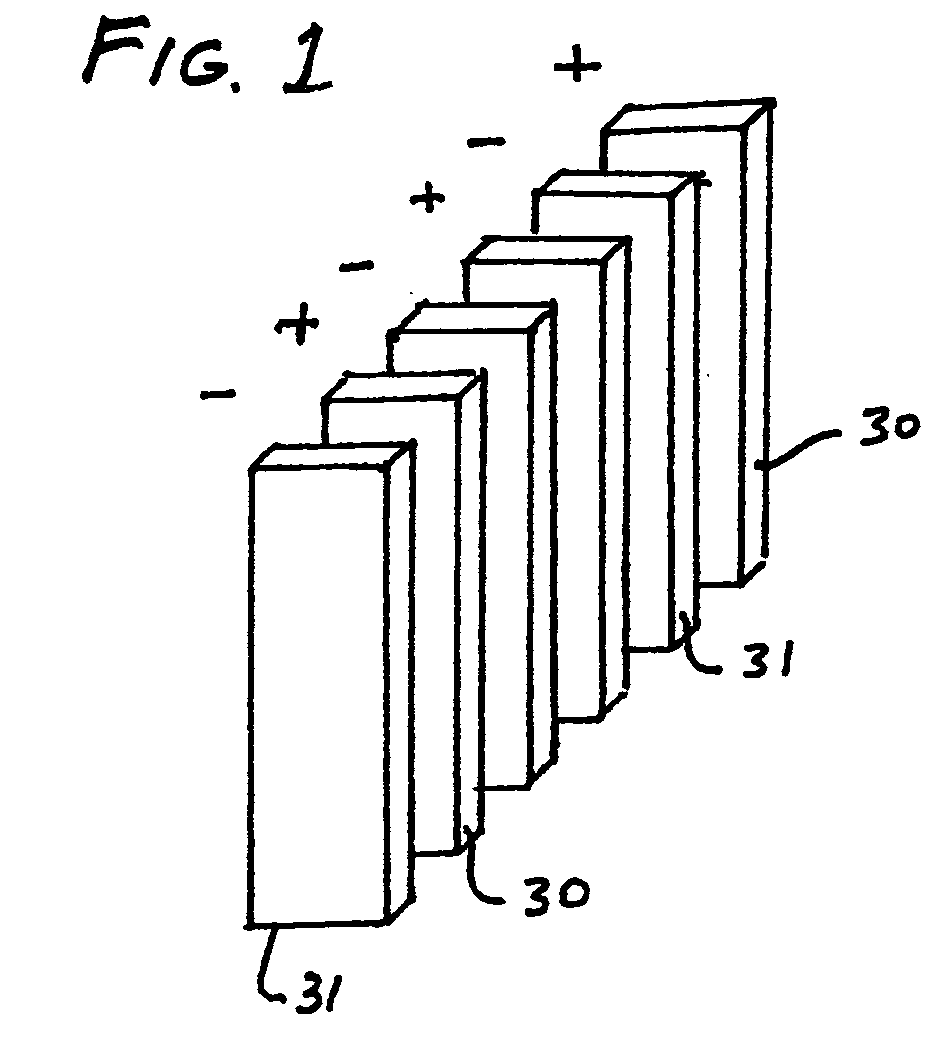Coagulants made in situ from sulfate-containing water and uses therewith
a technology of sulfate-containing water and coagulants, which is applied in the direction of filtration treatment, chemistry apparatus and processes, waste water treatment from quaries, etc., can solve the problems of high risk of scale formation with barium, strontium and other polyvalent metals, and high risk of forming highly undesirable compounds, etc., to facilitate the formation of sulfates, enhance the formation of heavy metal oxides, and enhance the effect of oxidation
- Summary
- Abstract
- Description
- Claims
- Application Information
AI Technical Summary
Benefits of technology
Problems solved by technology
Method used
Image
Examples
example 1
[0017]In the below described experiment, the compositions of the fluids were:
AMDWellPropertyUntreatedUntreatedColororangeOrangeOdornoneNoneSedimentfineFineDensity1.0061.112pH6.84.96Iron 25 ppm100 ppmChlorides 60 ppmHardness490 ppmSulfate750 ppm 90 ppm
[0018]The acid mine drainage (AMD) was passed through an electrocoagulator having aluminum electrodes using 26 volts and 8 amperes for periods of either 30 seconds or 2 minutes, as indicated below. In a separate run, the well water (a Marcellus shale flowback brine) was passed through at 7 volts and 25 amperes. This well fluid was combined with the untreated AMD in a ratio of 75% AMD and 25% well fluid, and passed through, with the results indicated below. Aluminum sulfate was formed in the AMD and was instrumental in reducing sulfate in both fluids.
AMD Untreatedfiltered only625 PpmSulfateAMD UntreatedEC-30 sec, filtered500 PpmSulfateAMD UntreatedEC-2 min, filtered375 PpmSulfate75% AMD-U*, 25%EC-2 min, filtered125 PpmWellSulfate75% AMD-...
PUM
| Property | Measurement | Unit |
|---|---|---|
| current | aaaaa | aaaaa |
| weight | aaaaa | aaaaa |
| concentrations | aaaaa | aaaaa |
Abstract
Description
Claims
Application Information
 Login to View More
Login to View More - R&D
- Intellectual Property
- Life Sciences
- Materials
- Tech Scout
- Unparalleled Data Quality
- Higher Quality Content
- 60% Fewer Hallucinations
Browse by: Latest US Patents, China's latest patents, Technical Efficacy Thesaurus, Application Domain, Technology Topic, Popular Technical Reports.
© 2025 PatSnap. All rights reserved.Legal|Privacy policy|Modern Slavery Act Transparency Statement|Sitemap|About US| Contact US: help@patsnap.com

